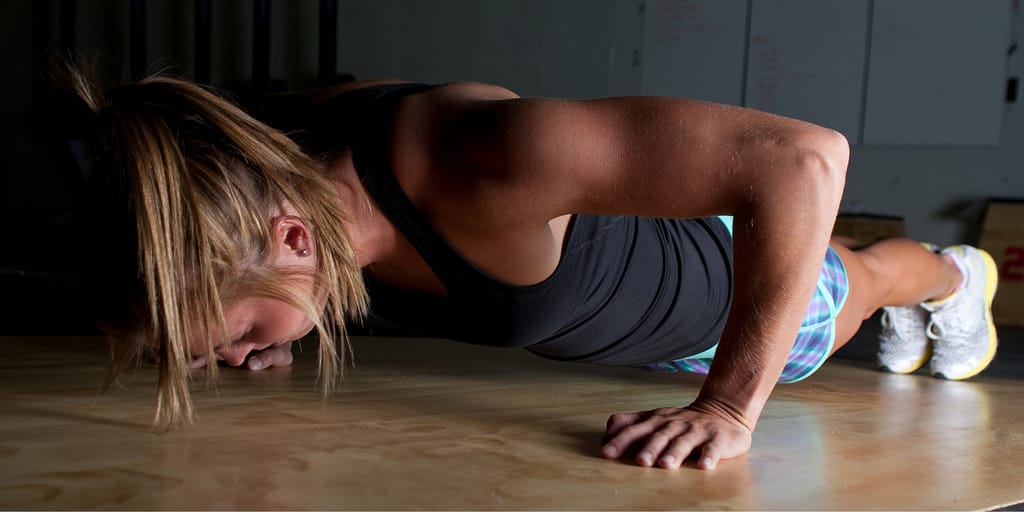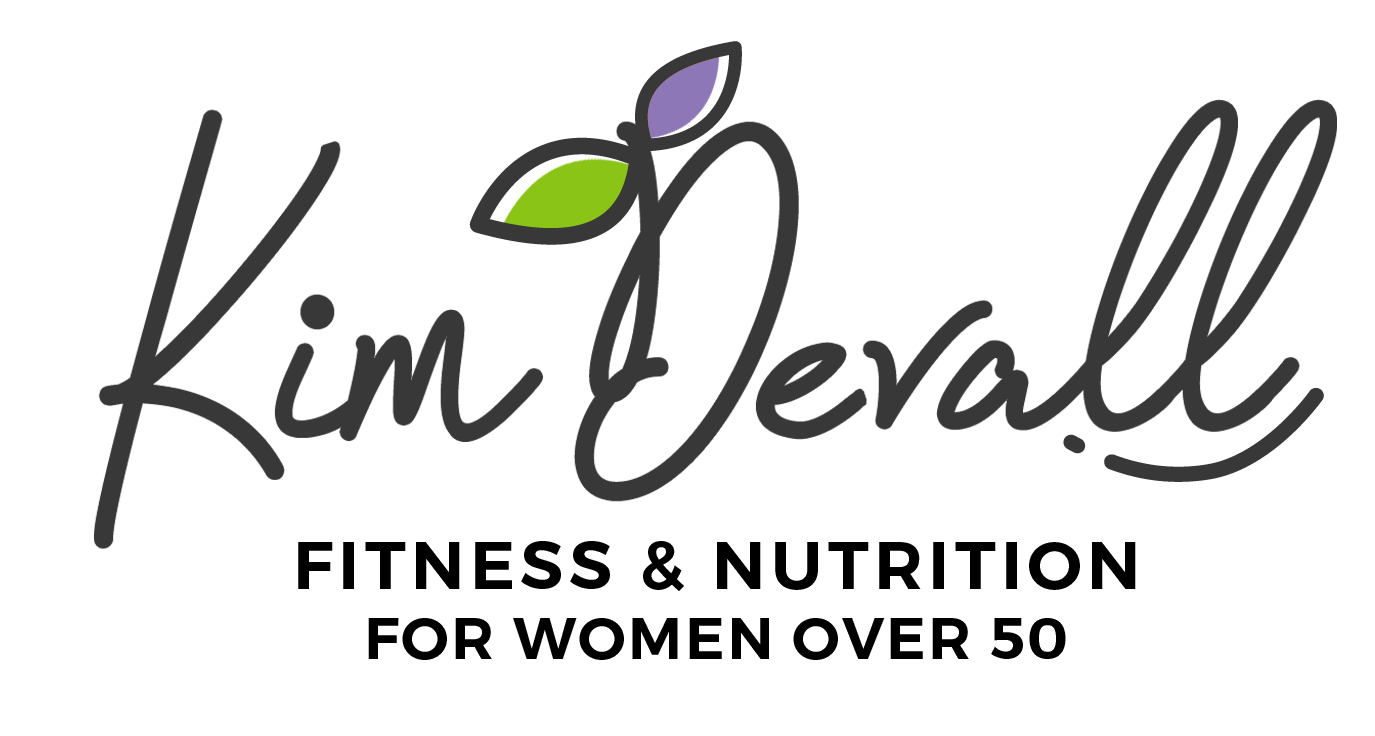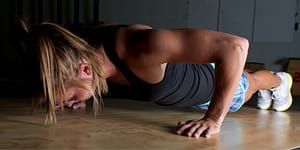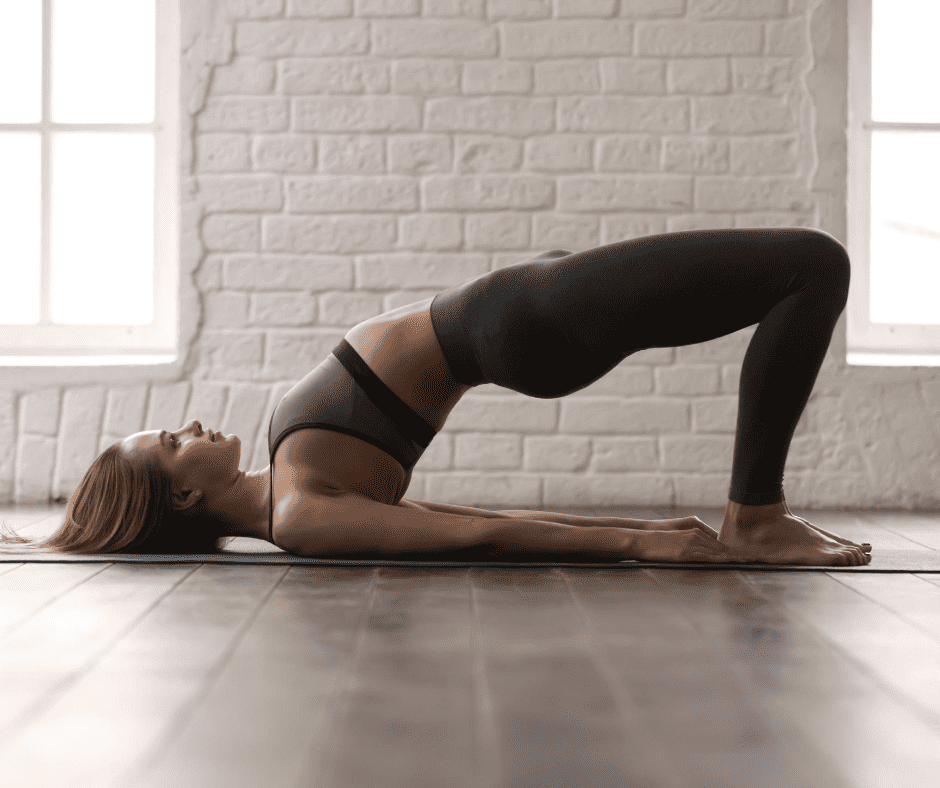- Post author:Kim Devall
- Post published:April 19, 2021
- Post comments:0 Comments
Want an amazing physique?
In this post, I’m sharing 8 ways these chest exercises for women will help you create that amazing physique.
Strength training, in general, is the single most effective way to build muscle, lose body fat and transform your physique. That is true for all muscle groups – shoulders, arms, back, legs and CHEST.

However, women frequently overlook chest exercises thinking these are only for the men. However, chest exercises won’t give you a manly looking chest. Instead, they will actually build muscle around the breast tissue which can then help to lift the breasts. This can help counter the effects gravity is having on us as we get older.
There are numerous benefits to doing chest exercises. Following are the top 8 reasons I firmly believe women need to include chest exercises in their fitness routine.
New here? Thanks for stopping by or welcome back. After you read this blog, be sure to check out some of my other articles for women over 50 who want to lose body fat, build muscle, create phenomenal bodies they love.
You may recall the cardio craze of the 80’s and 90s where women were directed to the cardio room while weightlifting was considered a “man’s” workout. Those were the days of leotards, leg warmers and headbands. Bring back any memories?

Well, that was me, in the beginning. Aerobic classes, treadmill, elliptical machines. Until I discovered strength training.
Despite often being the only female in the “men’s weight room”, the one with the heavy dumbbells, barbells and squat racks, and receiving frequent looks like “what are you doing in here?”, I somehow continued showing up. To be honest, it was incredibly intimidating in the beginning.
So, if you can imagine this primarily men’s group. What was the main exercise they were doing? If you guessed bench press, you’d be right. I think some of them were bench pressing everyday, not something I would recommend.
I had never done chest exercises before, but this was my start and I haven’t stopped since.
Our chest muscles should be treated as any other muscle group. You don’t want to ignore them. So, let’s talk about why not?
Chest exercises for women... avoid muscular imbalance
Our muscles all work together as one unit. Although strength training is no longer just for the men, women still often ignore chest exercises. Here’s the thing… ignoring one group of muscles, like the pectoralis muscles in the chest, can lead to muscular imbalance, which then can lead to pain or injury.
Without a strong chest, other smaller muscles may try to compensate which is likely to result in an injury.
Chest exercises for women... improve your posture
When you think of good posture, you may think about your shoulders and back. But did you know that your chest muscles (ie. pectoralis major and minor, or pecs) play a major role in good posture? Your pecs work to stabilize your shoulder joint.

And, if you sit hunched over a computer all day like I do, you are inadvertently shortening your chest muscle fibers.
Chest exercises will help to open up and lengthen these muscles and therefore, improve your posture.
So, if you have a desk job, this is a major reason to get your chest workout in.
Chest exercises for women... make it easier to breathe
Stronger chest muscles can make it easier to breathe. Specifically, the pectoralis minor, helps to expand your rib cage and opens up your diaphragm.
If you’re doing anything strenuous, you want to get oxygen to your muscles. By lengthening your pectoralis minor you’re able to take deep breaths and get more oxygen to all your muscles. This can improve your stamina and overall strength.
Chest exercises assist with building other muscles
Many chest exercises are compound movements, which simply means you are also using a variety of other upper body muscles, like your shoulders, back and triceps, to perform the movement.
Although your pectoralis major is the primary muscle worked during most chest exercises, your triceps, back and shoulders are working too.
Working your chest is a great way to get an overall upper body workout. Have you seen women with impeccable shoulders and triceps? You can almost bet they are working their chest, in addition to specific shoulder and tricep exercises
Chest exercises for women...create an extra calorie burn
Large muscles burn more calories! So, since the chest is one of the largest muscle groups, and more muscle means burning more body fat, it’s another great benefit of including chest exercises in your fitness routine.
Chest exercises... improve functional fitness for women
You may not realize it, but you use your chest muscles in many of your everyday movements. If a movement requires pushing or pulling, you can bet your chest muscles are working. Picking up a large suitcase… yep, your chest is working. Same goes for opening a heavy door.
These are activities you may take for granted now or you may be noticing that these things are getting harder and blame it on getting older. They aren’t harder because you are getting older. They are harder because your muscles are getting weaker.
And, that is most likely because you aren’t working them. If this is you, no worries. It’s not too late to add strength training and more specifically, chest exercises to your daily fitness routine.
Chest exercises are empowering
When you first begin doing chest exercises, you will likely find them to be hard. I know they were for me. Accomplishing hard things is empowering. Remember, what you may find hard today, will get easier.
I know most women cringe when I mention pushups. Without a doubt, this is one of the most empowering exercises for women. Not only are pushups the ultimate in chest exercises, as you get stronger you’ll likely experience an amazing sense of accomplishment.
Pushups are my favorite exercise. Not because they are easy, because they are not. But, because they are hard. You don’t get a huge sense of accomplishment from doing anything easy.
When you do a set of pushups, how can you not smile with pride?
Chest exercises help create an amazing physique
I mentioned earlier that chest exercises also work other muscles, like shoulder, triceps and back. While chest exercises are strengthening your chest, they also help sculpt a better overall physique. If the look of firm arms is appealing to you, adding chest exercises should be non-negotiable.
As your chest gets stronger, you also get the added benefit of toned, sexy arms that pop in your tank tops, and sleeveless dresses. Can you feel your confidence rising?
So, hopefully by now you are convinced that adding chest exercises to your routine is essential.
What are the best chest exercises for women?
There are a lot of variations, but I’ll stick with 3 primary chest exercises. This is all you need for a strong chest.

Pushups
As I said before, the pushup is the ultimate chest exercise. I’ll share 2 variations. A modified pushup where you’re on your knees and a regular pushup where you’re on your toes.
Modified pushup... on your knees
How to do it: Place your hands on the floor about shoulder-width apart with knees and toes on the floor.
Bending your elbow and keeping back flat, lower your body so that your chin either touches or comes close to the floor. Then push your body back up to the starting position.
Regular pushup... on your toes
How to do it: Place your hands on the floor about shoulder-width apart with toes on the floor. Keep your back flat. Knees are off the floor.
Bending your elbow and keeping back flat, lower your body so that your chin either touches or comes close to the floor. Then push your body back up to the starting position.
Do 10 – 15 pushups. Rest for a minute. Repeat. Do 2 – 3 sets.

Dumbbell Chest Press
How to do it: Lay flat on your back on either the floor or a workout bench. With a dumbbell in each hand, bring arms to a 90° position with palms facing toward your feet and triceps resting on or parallel to the floor. Knees are bent and feet are flat on the floor.
Press arms up over chest, extending dumbbells toward the ceiling and bring dumbbells together at the top. Slowly, lower the dumbbells back down to the starting position without resting your triceps on the floor (if doing these on the floor).
Do 10 – 12 reps. Rest for a minute or less. Repeat. Do 3 sets.

Dumbbell Chest Fly
How to do it: Lay flat on your back on either the floor or a workout bench. Knees are bent and feet are flat on the floor. With a dumbbell in each hand, extend your arms directly over your head.
Lower your arms out to the side keeping a slight bend in your elbows. Lower the dumbbells until they are approximately shoulder height, squeeze your chest and raise arms back to starting position. Don’t allow your elbows to dip below the bench or touch the floor.
Do 10 – 12 reps. Rest for a minute or less. Repeat. Do 3 sets.
Pin it now. Read it later.













































































